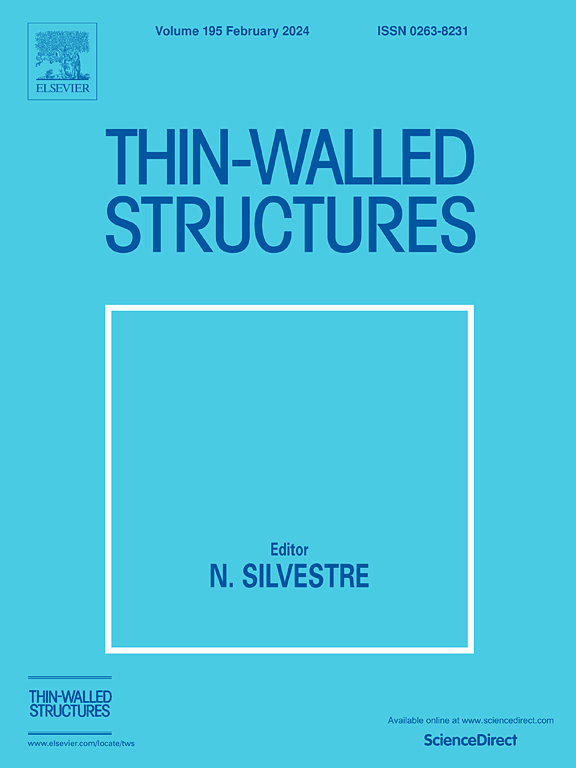Analytical model for stress calculation of ultra-thin cobalt chromium L605 coronary stent
IF 5.7
1区 工程技术
Q1 ENGINEERING, CIVIL
引用次数: 0
Abstract
Coronary stents play a vital role in interventional cardiology by preventing artery collapse and ensuring blood flow after angioplasty. These mesh-like devices have seen significant advancements in materials, design, and drug-eluting technologies to minimize restenosis and improve long-term outcomes. Despite extensive research on both balloon-expandable and self-expandable stents, there remains a notable lack of mathematical models specifically tailored to balloon-expandable stents. This study addresses that gap by introducing a novel analytical model based on curved beam theory and geometric relations, providing a rapid and reliable method for evaluating the elastoplastic behavior of balloon-expandable stents, particularly those with curved hinges. This offers a significant advantage in optimizing stent performance. The mechanical behavior of a newly designed ultra-thin cobalt chromium stent, as described in our previous research, is evaluated through comprehensive simulations using ANSYS Workbench. Finite Element Analysis (FEA) offers critical insights into stress, strain, and residual stress, with stress concentrations primarily located at the inner radius of the curved hinges. The close alignment between the analytical model and FEA results validates the model's accuracy. Furthermore, the model is used to examine the effect of geometric parameters, such as the number of circumferential cells and the length of connecting links, on stent performance. These insights help identify optimal design parameters for reducing stress.
求助全文
约1分钟内获得全文
求助全文
来源期刊

Thin-Walled Structures
工程技术-工程:土木
CiteScore
9.60
自引率
20.30%
发文量
801
审稿时长
66 days
期刊介绍:
Thin-walled structures comprises an important and growing proportion of engineering construction with areas of application becoming increasingly diverse, ranging from aircraft, bridges, ships and oil rigs to storage vessels, industrial buildings and warehouses.
Many factors, including cost and weight economy, new materials and processes and the growth of powerful methods of analysis have contributed to this growth, and led to the need for a journal which concentrates specifically on structures in which problems arise due to the thinness of the walls. This field includes cold– formed sections, plate and shell structures, reinforced plastics structures and aluminium structures, and is of importance in many branches of engineering.
The primary criterion for consideration of papers in Thin–Walled Structures is that they must be concerned with thin–walled structures or the basic problems inherent in thin–walled structures. Provided this criterion is satisfied no restriction is placed on the type of construction, material or field of application. Papers on theory, experiment, design, etc., are published and it is expected that many papers will contain aspects of all three.
 求助内容:
求助内容: 应助结果提醒方式:
应助结果提醒方式:


